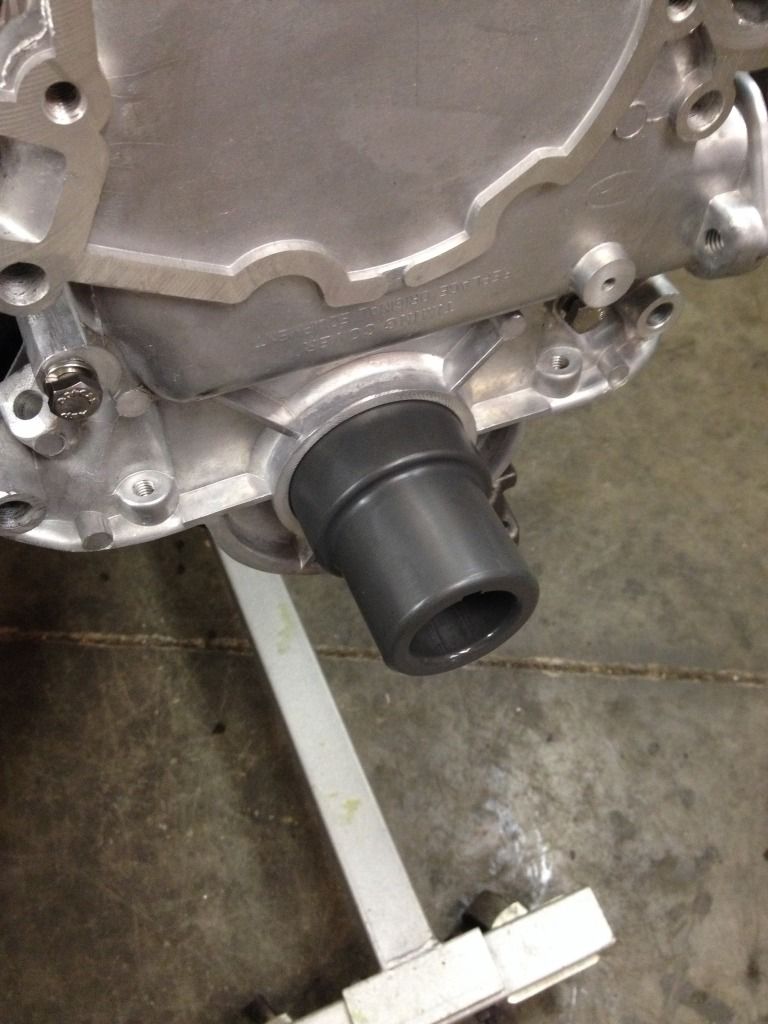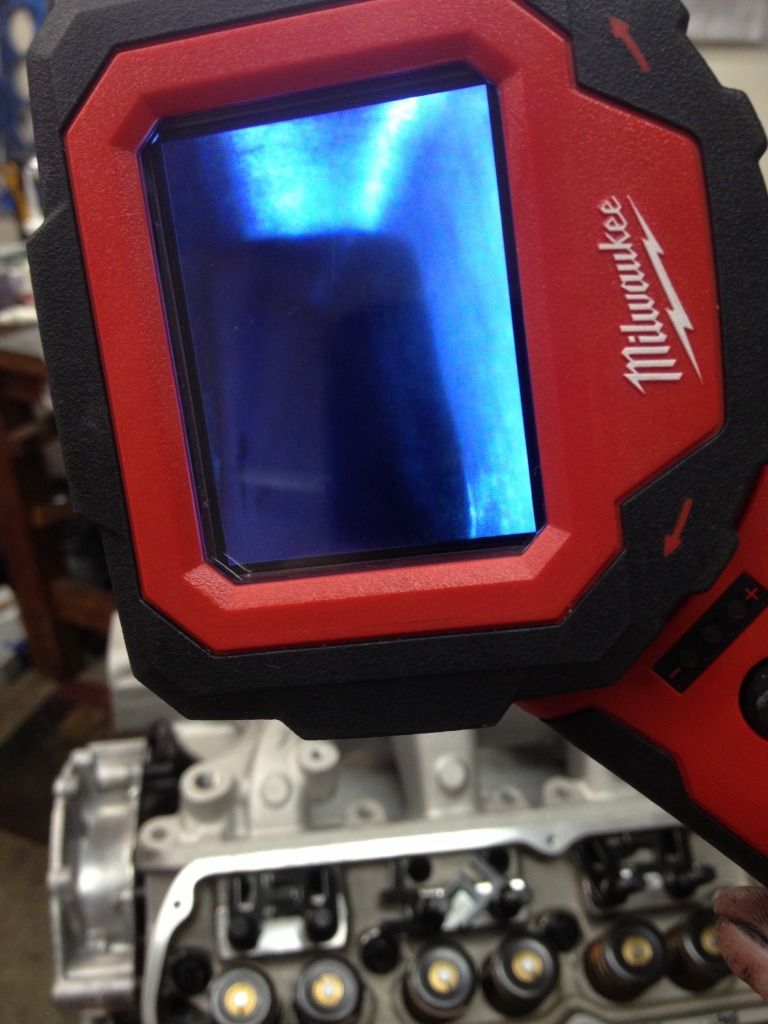Timing cover is on and fuel pump is on.

I have a tool that I use to center the timing cover. One end is for Windsors and Clevelands, the other end is for FE's. I used to try to align the timing cover by the balancer or the balancer spacer, but I had a couple of front seal failures by doing it that way. Normally, when you try to align with the balancer or spacer, you find yourself trying to make the flange of the timing cover flush with the pan rail of the block, and you'd be surprised at how many timing covers will not be flush when perfectly centered.
Anyway, I use the tool, bolt the cover up, then in the Windsor/Cleveland's case, pop the seal on with another tool.
Also got the head gaskets and heads bolted on. I torque them and then let them sit overnight (or at least several hours) then I go back and re-torque. You oughta try it sometime: torque the fastener, mark it, then back it off and re-torque. Due to fastener stretch and gasket loading, you will end up moving the fastener further to achieve the same torque spec.
I also test-fit the intake manifold. On a single plane, it's mucho easy to check port alignment. On most dual planes, it's a pain in the butt.
This is where a bore scope comes in handy.

I first check manifold fitment without a gasket. This lets me get a general idea of where I'm at, plus it lets me see how close the intake flange angle is against the head flange.
Sometimes the intake is perfectly aligned with no gasket, so that means it needs to have the flanges whacked off. In this case, it needed to be moved up, so I tried it with some gaskets. The picture above is with a .060" gasket. It's not bad, but could stand to be better. I tried it again with a .090" 1262R gasket and it was pretty much dead on, so that's what I'll use.
Pushrods and rocker arms came today. Delivering a 428CJ to Boss Cars in Gahanna, OH tomorrow, so I won't get much work done, but I plan to get a good chunk finished this weekend.